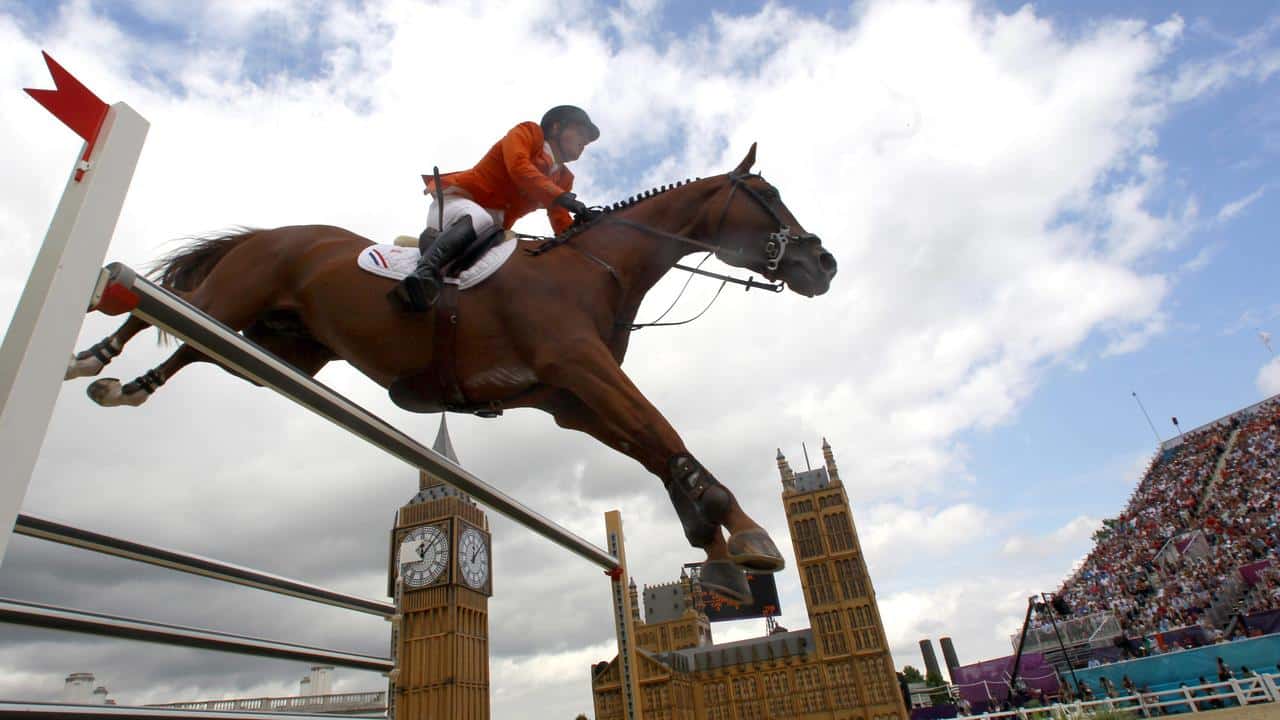Introduction
While riders and their skills are usually the main focus in the world of show jumping, Behind every success there is a fundamental partner: the jumping horse. In this article, We will immerse ourselves in the fascinating world of the daily life of these noble animals and explore what makes their relationship with riders so special.
Care Routine
Balanced diet
jumping horses, just like any athlete, They rely heavily on a proper diet to reach their full potential on the court.. The importance of a balanced diet cannot be underestimated, as it provides the essential nutrients needed to maintain your health and optimize your performance during demanding training sessions and competitions.
A fundamental part of a show jumping horse's diet is quality hay. This food provides fiber and is essential for the proper functioning of the horse's digestive system., promoting healthy digestion and regulating the passage of food through the gastrointestinal tract. Besides, quality hay helps maintain the horse's weight and body condition, what is crucial for your athletic performance.
In addition to hay, Jumping horses require specific concentrates designed to meet the nutritional demands of a horse in intense work. These concentrates are usually formulated with a balanced blend of proteins, carbohydrates, vitamins and minerals to support energy, muscle recovery and maintenance of horse tissues. It is important to choose high-quality concentrates and adapt the quantity according to the individual needs of each horse., taking into account factors such as age, activity level and health status.
Finally, but not less important, Constant access to fresh water is essential for the health and optimal performance of show jumping horses. Adequate hydration is essential to maintain proper organ function, regulate body temperature and prevent dehydration, especially during periods of intense exercise and in hot weather. Owners and caretakers should ensure that horses have access to clean, fresh water at all times, whether in the stable, in the field or during travel.
Helmet and Helmet Care
Regular hoof care is essential to prevent injuries and ensure horse comfort. This includes regular trimming of hooves., apply horseshoes when necessary and maintain good hygiene in the stable to prevent infections.
Bond with the Rider
Trust and Communication
The relationship between a show jumping horse and its rider is based on mutual trust and clear communication. Through the time spent together on the track and in the barn, Riders and horses develop a unique bond that allows them to work in harmony during the challenges of jumping.
Training and Positive Reinforcement
Training a show jumping horse is a process that requires patience, dedication and a carefully crafted approach. At its core, is based on positive reinforcement techniques, a philosophy that seeks to reward desirable horse behaviors to encourage cooperation and enthusiasm for work. This approach is based on the understanding that horses respond better to motivation and positive encouragement than to coercion or force..
One of the most effective ways to apply positive reinforcement in jump training is through food rewards.. These can range from special treats to a simple sample of the horse's favorite food., offered immediately after the horse correctly performs a specific task, how to jump an obstacle successfully. These rewards not only serve as an incentive for the horse, but also reinforce the positive association between the desired behavior and the reward, thus strengthening the bond between rider and horse.
In addition to food rewards, Verbal praise also plays a crucial role in jump training. Horses are social creatures that respond positively to the attention and verbal encouragement of their handlers.. Praise the horse with words of encouragement, as “Well done!” o “You are amazing!”, after a successful jump not only reinforces the desired behavior, but also strengthens the horse's confidence and emotional connection with the rider..
Finally, to keep the horse engaged and motivated, it is essential to vary training sessions. Monotony can lead to boredom and lack of interest on the part of the horse, which can negatively affect your performance. Introduce new challenges, like different obstacle configurations, balance exercises or work on varied terrain, helps keep the horse's mind alert and engaged. In addition, Alternate between training activities, how to work on the track, jumping sessions and free time in the field, ensures that training is stimulating and enriching for the horse.
Personality and Unique Qualities:
Diversity of Personalities
just like humans, Jumping horses have individual personalities that influence their behavior and performance on the track. Some can be bold and energetic, while others may be more calm and methodical. Understanding each horse's unique personality is essential to maximizing its jumping potential..
Strength and Agility
Jumping horses are incredibly strong and agile athletes, able to overcome obstacles with grace and precision. Their combination of physical strength and coordination allows them to face difficult challenges on the track and overcome obstacles with elegance and style..
Conclusion
Behind every impressive jump is a dedicated and talented horse who works tirelessly alongside his rider to achieve greatness.. By understanding and appreciating the lives of these magnificent animals, we can further celebrate the achievements of equestrian sport and the extraordinary relationship between humans and horses. Long live the passion for equestrian jumping!!



